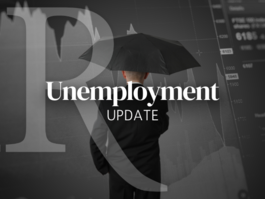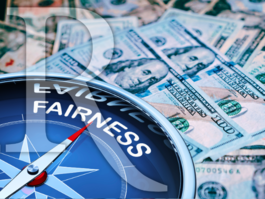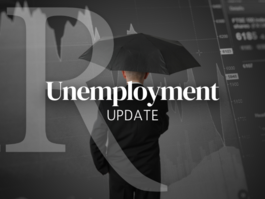Q1 Slowdown: Caveat Emptor
A Commentary By Lawrence Kudlow
Caveat emptor: The first-quarter economy is slowing, and inflation is rising. A month ago, economists were optimistic about the potential for 4 percent growth. Now they are marking down their estimates toward 2.5 percent. Behind this, consumer expectations are falling, while inflation fears are going up.
A recent CNBC All American Economic Survey revealed that 37 percent of respondents expect the economy to get worse in the next year. That's up about 15 percentage points from the December poll. The key reasons? Worries over rising food and fuel costs. Respondents anticipate prices to climb 6.6 percent over the next year. That's double the 3 percent inflation registered in the December survey.
Supporting the CNBC poll, the early March consumer sentiment index from the University of Michigan dropped sharply, with the reading for consumer expectations falling 14 points. Additionally, one-year inflation expectations have risen to 4.6 percent in March, from 3.4 percent in February.
Of course, everyone has been badly shaken by the terrible disaster in Japan. For the U.S. economy, supply-chain disruptions will damage growth. Also, the civil war in Libya and the broad unrest across North Africa and the Middle East has fueled a mild oil-price shock, also subtracting from U.S. growth.
So if the economy ending in the March quarter slows to less than 3 percent, it would mark the fourth-straight sub-3-percent gross domestic product reading. Despite the strength in the manufacturing sector and rising corporate profits, that reading would underscore the softness of this recovery cycle.
The main cause of today's consumer angst is undoubtedly the jump in gasoline prices. Nationwide, the pump price has climbed to $3.55 a gallon, up from $3.16 a month ago and $2.82 a year ago (for a 26 percent one-year jump). The last leg of this gas-price jump can be attributed to the $10 or $12 oil-price spike, resulting from supply worries in the Arab world. But it's worth noting that gasoline moved from $2.70 to $3.15 just as soon as Ben Bernanke announced his money-pumping QE2 strategy in late August last year.
All things the same, the gasoline price could knock a half percent off growth and add a half percent to inflation. In fact, the consumer price index has registered three consecutive outsized monthly gains and is running 5.6 percent at an annual rate through the three months to February. This increase is led by a 79 percent increase in gasoline prices and a 5 percent gain in food prices.
But food commodities have jumped 37 percent over the past year. So there's more coming at the retail price level.
Meanwhile, the producer price index has spiked for three straight months and is up nearly 14 percent at an annual rate for the three months ending in February. Inside the PPI, wholesale food is up 22 percent during the three-month period through February. Plus, the import price index operating through the weak dollar is up nearly 7 percent over the past year. There's a profit-warning here: Spiking raw-material and energy wholesale prices will pinch future corporate profits.
The dollar looks weaker and weaker. Even when the G7 intervened to lower the yen and help the beleaguered Japanese, the dollar rose 2 percent relative to the Japanese currency, but fell against all the other major currencies. Not a good sign for the greenback.
It used to be known as King Dollar, but today the greenback is closing in on all-time lows when measured against various currency baskets.
And the Fed keeps creating new dollars. Measured by the St. Louis Fed, the monetary base has grown $360 billion since early November -- a 54 percent annual growth rate -- as Bernanke continues his money-pumping plan.
So the Fed is pouring in new money, the dollar is sinking, and inflation is rising. Many believe this ultra-easy-money and cheap-dollar approach will cause the economy to boom. They said the same thing about the $800 billion spending stimulus. But the Keynesians are wrong. The recovery remains soft, and it may be getting even softer as of the winter-quarter results.
One final point: The decline of the dollar and the rise of inflation seem to be offsetting, or neutralizing, the effect of the December tax-cut extensions. Initially, those extensions helped bolster consumer spirits and economic growth. But the onset of food and fuel inflation from the cheap dollar looks like a tax hike that offsets a tax cut.
This is just what we saw during the George W. Bush years, when the falling dollar caused asset bubbles, commodity inflation and oil spikes, all of which ended up undermining lower tax rates.
The world's not coming to an end. Neither is the economic recovery. But we can do a whole lot better.
COPYRIGHT 2011 CREATORS.COM
See More Commentary by Lawrence Kudlow.
See Other Political Commentary.
Views expressed in this column are those of the author, not those of Rasmussen Reports. Comments about this content should be directed to the author or syndicate.
Rasmussen Reports is a media company specializing in the collection, publication and distribution of public opinion information.
We conduct public opinion polls on a variety of topics to inform our audience on events in the news and other topics of interest. To ensure editorial control and independence, we pay for the polls ourselves and generate revenue through the sale of subscriptions, sponsorships, and advertising. Nightly polling on politics, business and lifestyle topics provides the content to update the Rasmussen Reports web site many times each day. If it's in the news, it's in our polls. Additionally, the data drives a daily update newsletter and various media outlets across the country.
Some information, including the Rasmussen Reports daily Presidential Tracking Poll and commentaries are available for free to the general public. Subscriptions are available for $4.95 a month or 34.95 a year that provide subscribers with exclusive access to more than 20 stories per week on upcoming elections, consumer confidence, and issues that affect us all. For those who are really into the numbers, Platinum Members can review demographic crosstabs and a full history of our data.
To learn more about our methodology, click here.



